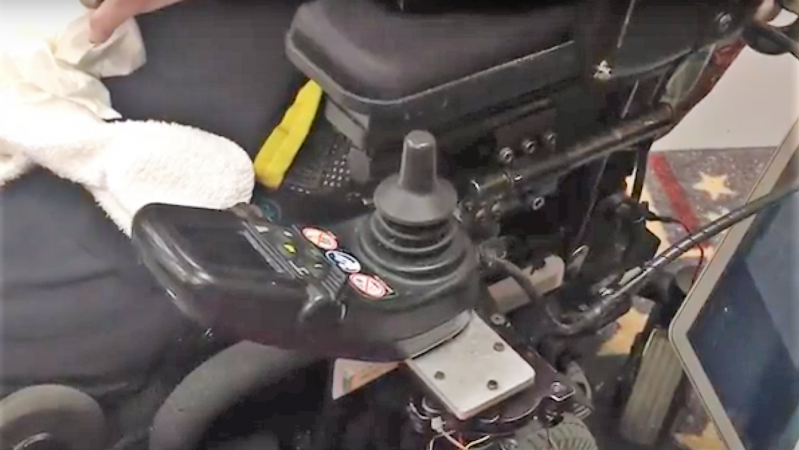[Rhonda] has multiple sclerosis (MS), a disease that limits her ability to walk and use her arms. She and the other residents of The Boston Home, an extended care facility for people with MS and other neuromuscular diseases, rely on their wheelchairs for mobility. [Rhonda]’s chair comes with a control console that swings out of the way to allow her to come up close to tables and counters, but she has problems applying enough force to manually position it.
Sadly, [Rhonda]’s insurance doesn’t cover a commercial solution to her problem. But The Boston Home has a fully equipped shop to extend and enhance residents’ wheelchairs, and they got together with students from MIT’s Principles and Practices of Assistive Technology (PPAT) course to hack a solution that’s not only useful for [Rhonda] but should be generally applicable to other chairs. The students analyzed the problem, measured the forces needed and the clearances required, and built a prototype pantograph mount for the control console. They’ve made the device simple to replicate and kept the BOM as inexpensive as possible since patients are often out-of-pocket for enhancements like these. The video below shows a little about the problem and the solution.
Wheelchair hacks are pretty common, like the 2015 Hackaday Prize-winning Eyedrivomatic. We’ve also covered totally open-source wheelchairs, both manual and electric.















Nice hack. Shame the chair manufacturer can’t be bothered to customise / listen to customers.
In the UK there’s a Cambridge company called Dragon Mobility that actually tailors their chairs for their clients – admittedly they’re not cheap, but they’re staffed by a wonderful bunch of engineers (Disclaimer: they’ve been clients of mine in the past)
http://www.dragonmobility.com/
Santa is watching MIT with approval, and I am sure there will be something nice in your stockings this year.
The mechatronics/mechanical students out there need to devise a standard flat-pack Kit out of 40×40 T-slot aluminum and mountain bike parts. Bonus points if you can figure out how to allow some of these people back into the workforce driving forklifts, and show MIT how problems are really solved.
*<(;-)
Bravo! Seems such a simple issue to fix, but made much more complex by the fact that insurance won’t cover anything they aren’t specifically regulated to by government.
Good to hear that despite the MS Rhonda has held on to her excellent Boston accent! :)
Oh come on. “Final device” with breadboard, tape and a zip tie? In a device that absolutely has to be shock, spill and weather proof?
IMHO the thing to work on here is the insurance issue. For society to advance there is a need to bring all individuals up to a minimum functional standard. Public schools are wildly expensive and taking care of those NOT disabled. A nationwide effort to design and provide assistive technology for the disabled seems very appropriate. America currently has a phrase of “Leave No Child Behind.” and this honestly should be “Leave No Person Behind”. That this is not the case leaves me feeling shame for society.